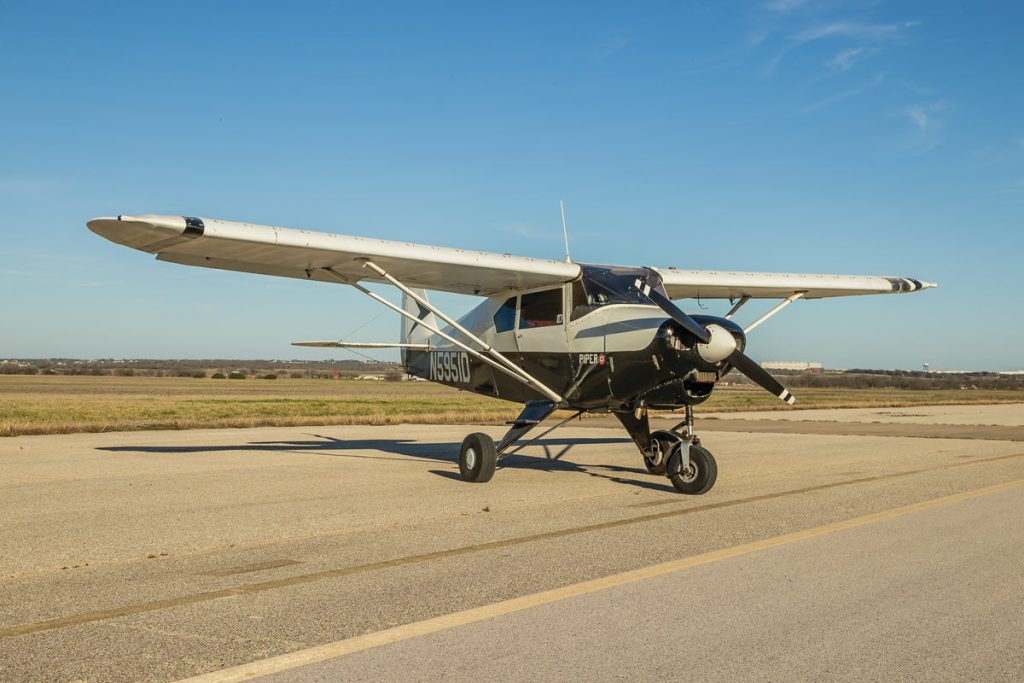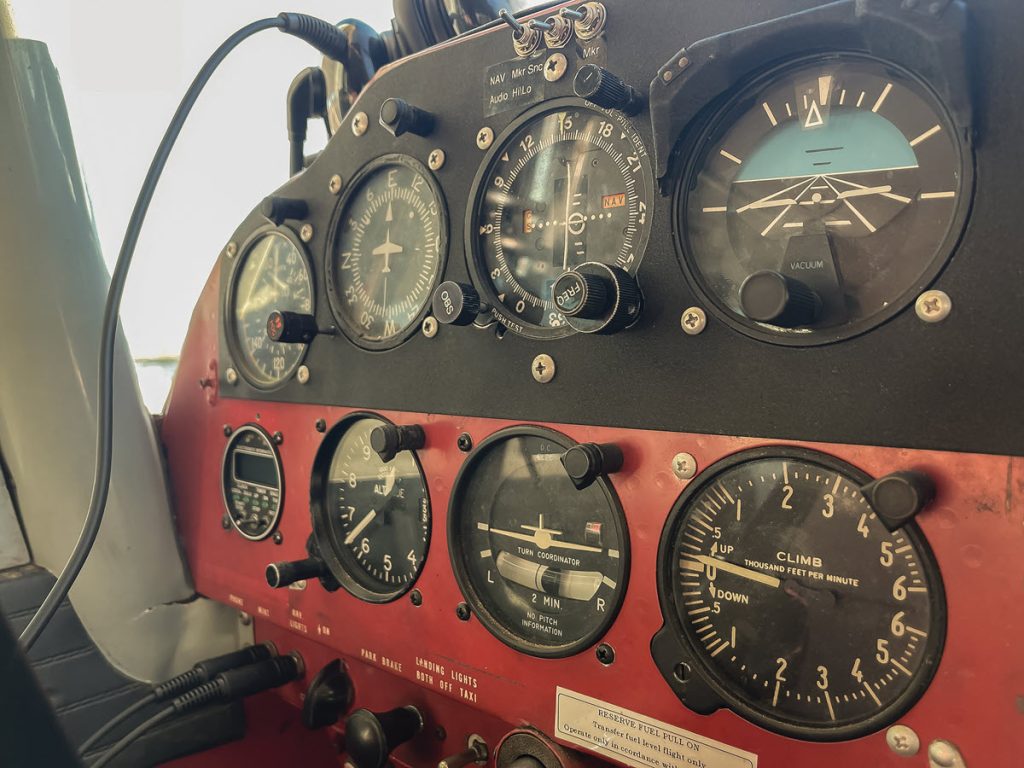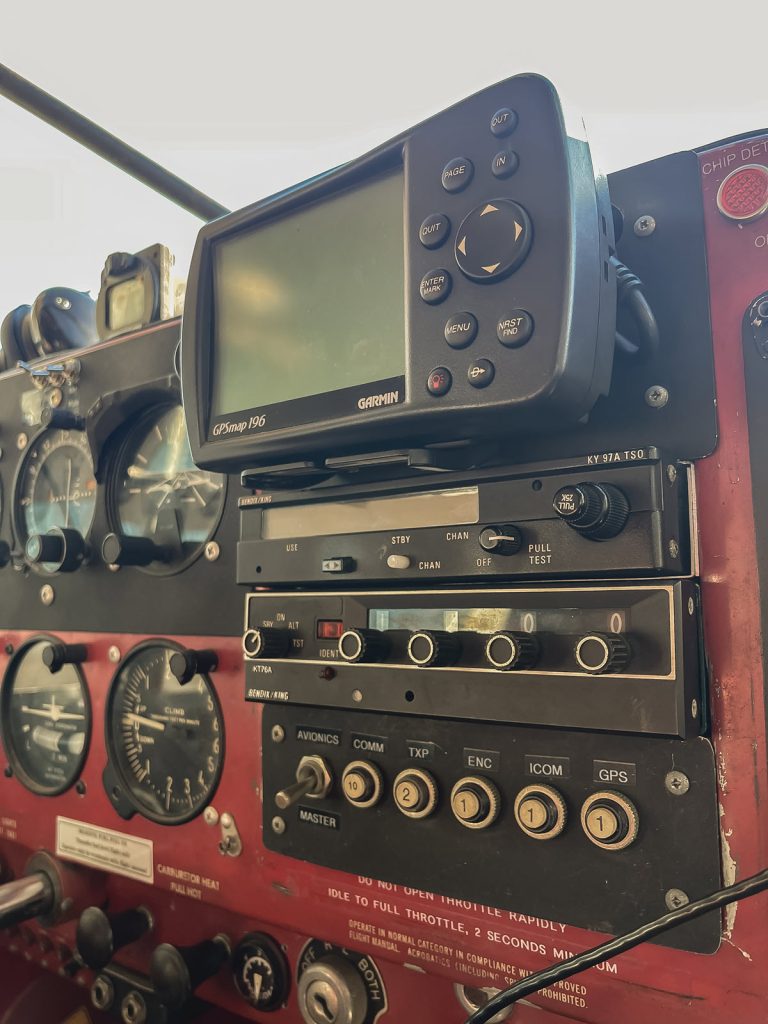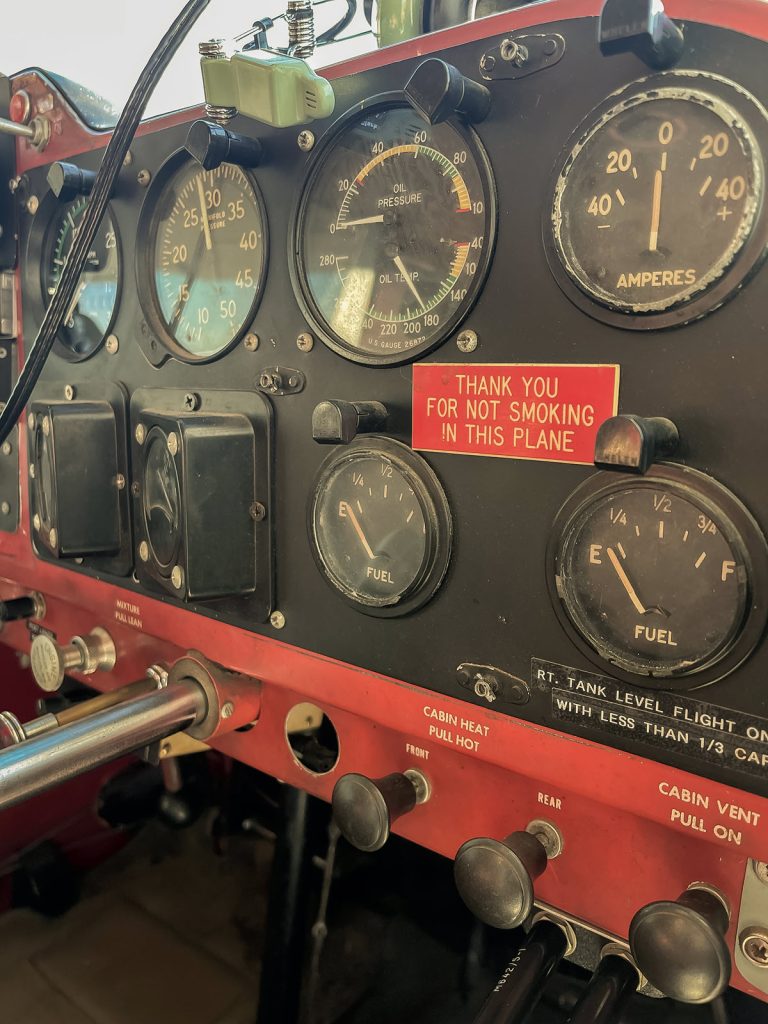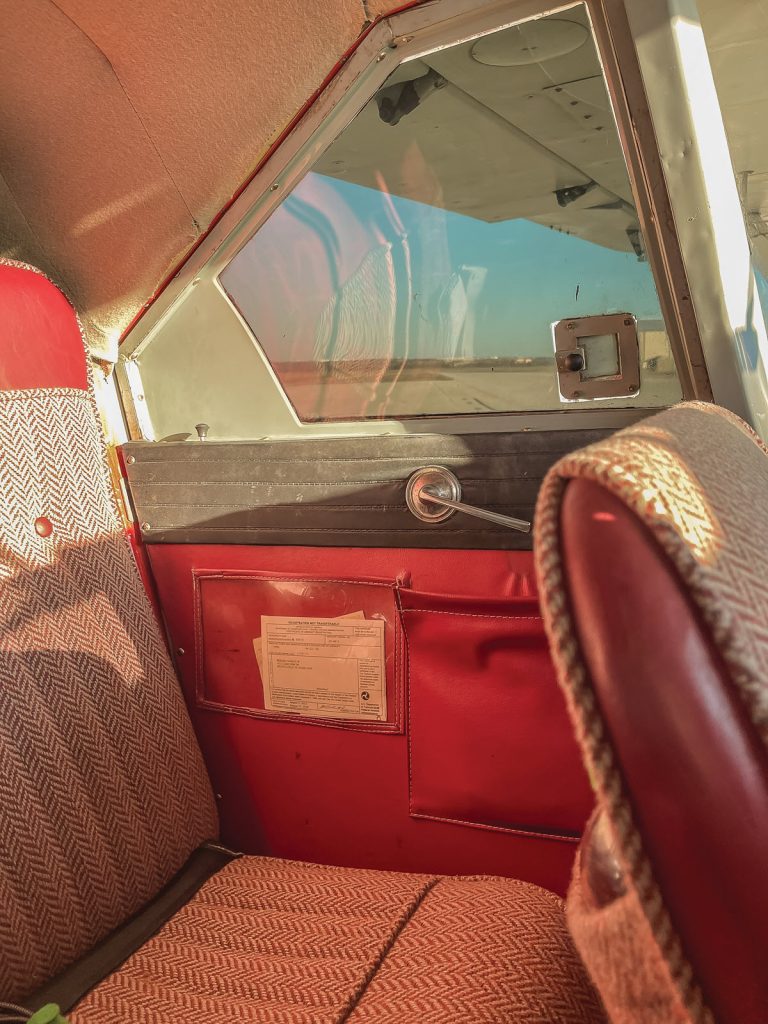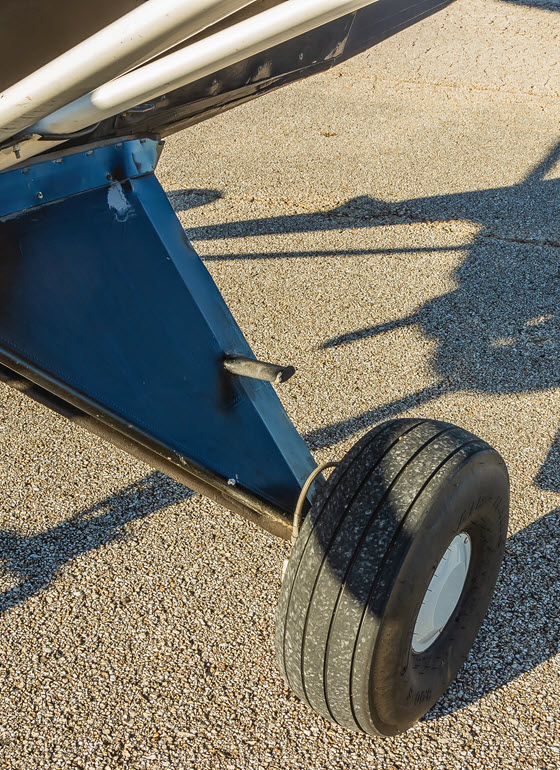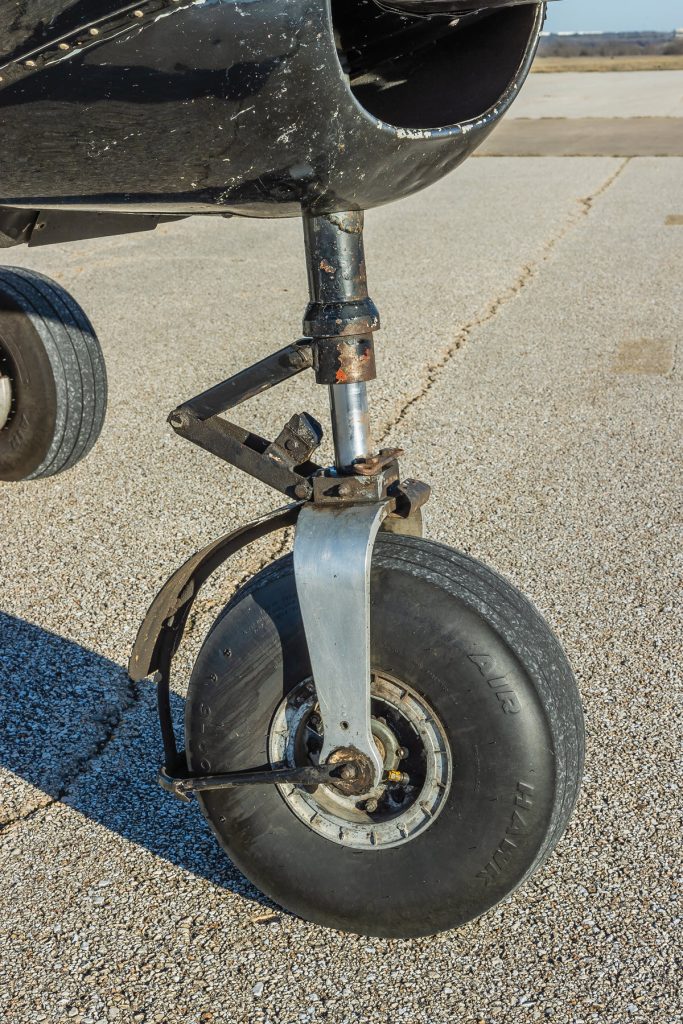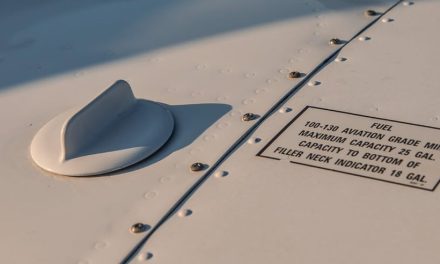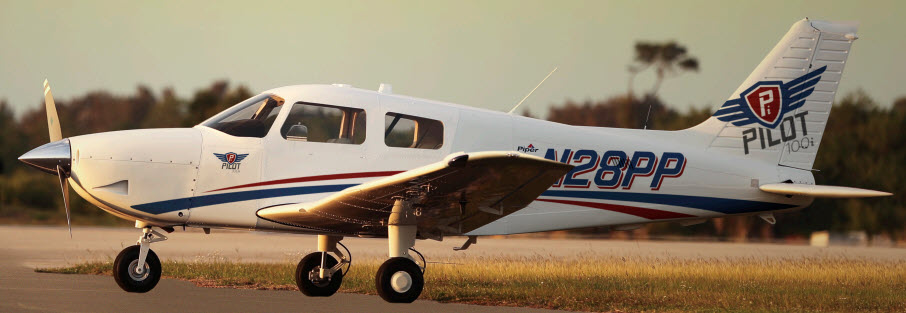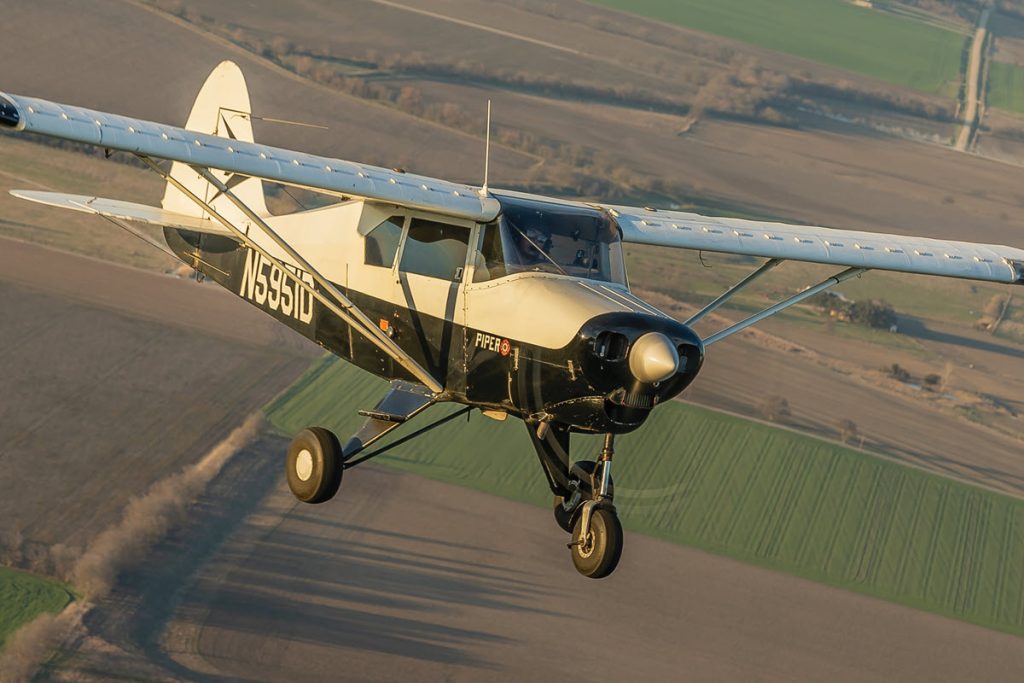
By Michelle Adserias
The crop dusters appeared on the distant horizon, above the endless land. As they approached the fields, they dipped to fly just above the ground – or so it seemed. With precision timing, they released the liquids needed to keep the crops healthy. Then they pulled up and circled around to make another pass.
Chaz Briscoe’s fascination with flying began when he was young. He grew up in a farming community and always loved watching the aerial applicators hard at work. So, it’s not surprising he pursued his pilot’s training at the Kickapoo Downtown Airport (KCWC) and received his certificate in April 2023 after his check ride to Lubbock, Texas.
The Right Opportunity
Chaz wasted no time. He began searching for a plane to call his own, something that was dependable and fun to fly, something he could use to build up his flight time. His research led him to the Piper Tri-Pacer because it “was a good airplane and wasn’t selling for a crazy number.”
Chaz purchased his Piper Tri-Pacer in May of 2023. It had been sitting for quite some time. The most recent annual inspection was from 2016. Chaz asked a mechanic he knows and trusts to do a pre-buy and annual inspection. Everything checked out and the plane fired right up!
“I was like a kid in a candy store just happy to have the opportunity to be able to purchase it without any huge setbacks.” The owner was on site for the purchase and brought all the logs, some stories and a few pictures of the airplane.
One of the stories was about an old dairy farmer who had owned it. He would take off from the grass strip next to his dairy barn, the same grass strip where the cows grazed. The wheels would, fairly frequently, fling cow manure onto the bottom sides of the wings. If you didn’t watch your head getting in and out of the Piper, well, you can imagine what happened.
A Mid-Century Wonder
This Piper Tri-Plane was manufactured in 1956. Chaz appreciates the vintage look and feel of his plane and would like to keep it as close to original as possible “without going all digital.”
The airplane’s interior is red and he plans to keep it that way when he renovates. He’s also contemplating a red and white paint job for the exterior. You see, Chaz is a professional firefighter. He was recently busy fighting wildfires in the Texas panhandle. The color red is just a natural fit.
Because he hasn’t owned the plane long, he hasn’t begun any renovations. He does plan to change out a few of the older avionics. He’d like to change the transponder to a digital with ADS-B. He’s also considering a newer set of nav/comm radios.
Based on the research he’s done, Chaz isn’t concerned about getting parts for his Piper Tri-Pacer. They seem to be fairly available through UNIVAIR, the parts supplier Chaz most often uses.
Piper Tri-Pacer Pros and Cons
Chaz learned to fly in a Cessna 172. Initially, he found flying the Pacer quite an adjustment. “The Pacer is a totally different plane.” It took some time for him to get used to the shorter wings, the interconnected rudder and the ailerons. However, now that he’s logged so much time in his Pacer – 140 hours in just under a year – Chaz finds it strange to fly his friends’ 172s.
When asked what he likes most about his Tri-Pacer, Chaz said part of the thrill is being a first-time owner. The Piper hasn’t given him any problems and he has so much fun flying it. He loves it when he arrives at an airport and someone walks out to question the year and the motor. But, one of the best parts of plane own ership for Chaz is when his three-year-old daughter hangs out with him at the hangar. She likes to help her dad clean it.
There are a few things Chaz would change. He’d like to have a tail wheel and toe brakes. He’d prefer windows that opened a bit more for better air movement in the cabin during the summer months. And it wouldn’t hurt if the Pacer was a little roomier. Chaz is 6’3″ tall. He finds it a challenge to “getting in and out of the thing” and there’s not much space in the rear when the seat is in place.
What does it cost to keep this Piper Tri-Pacer in the air? At this point, fuel is the biggest expense. Chaz spends about $40 per hour with the plane’s fuel consumption about 8-10 gallons per hour.
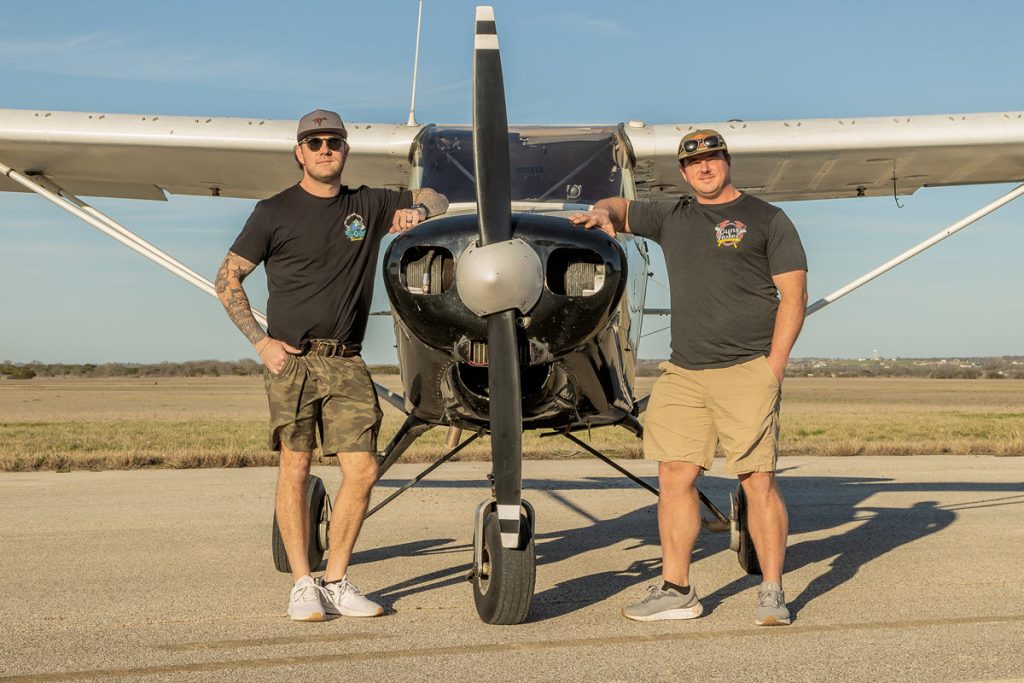
Favorite Haunts and Jaunts
Like most pilots, Chaz has his favorite places to visit. His go-to jaunt is along the Red River, which separates Texas from Oklahoma. Chaz grew up on the banks of the Red River. He always looks forward to getting a bird’s eye view of it. At this time, Chaz only flies VFR.
He and a friend, also a firefighter, often fly into new places for lunch. Their favorite haunt is the Hard Eight BBQ in Stephenville, Texas. Chaz said their number is in the FBO. Just give them a call when you arrive and they’ll pick you up from the airport and shuttle you back when you’re finished.
For Chaz, the highlight of flying to new destinations is the comradery with his fellow pilots. “Every time I land somewhere different, someone always walks out to question the year and the motor.” Chaz is always willing to “talk shop.” It’s an opportunity to swap not only stories, but also gain insights from more experienced pilots.
What the Future Holds
The adventurer in Chaz likes getting off the beaten trail, taking off from and landing on grass runways and off-airport landing sites. He looks forward to exploring more out-of-the way and hidden places. Hopefully, he’ll avoid those manure-tainted cow pastures!
Specifications & Performance of 1956 Tri-Pacer and 1952-1954 Pacer
The rest of this article can be seen only by paid members who are logged in.Have a website login already? Log in and start reading now.
Never created a website login before? Find your Customer Number (it’s on your mailing label) and register here.
JOIN HERE
Still have questions? Contact us here.

